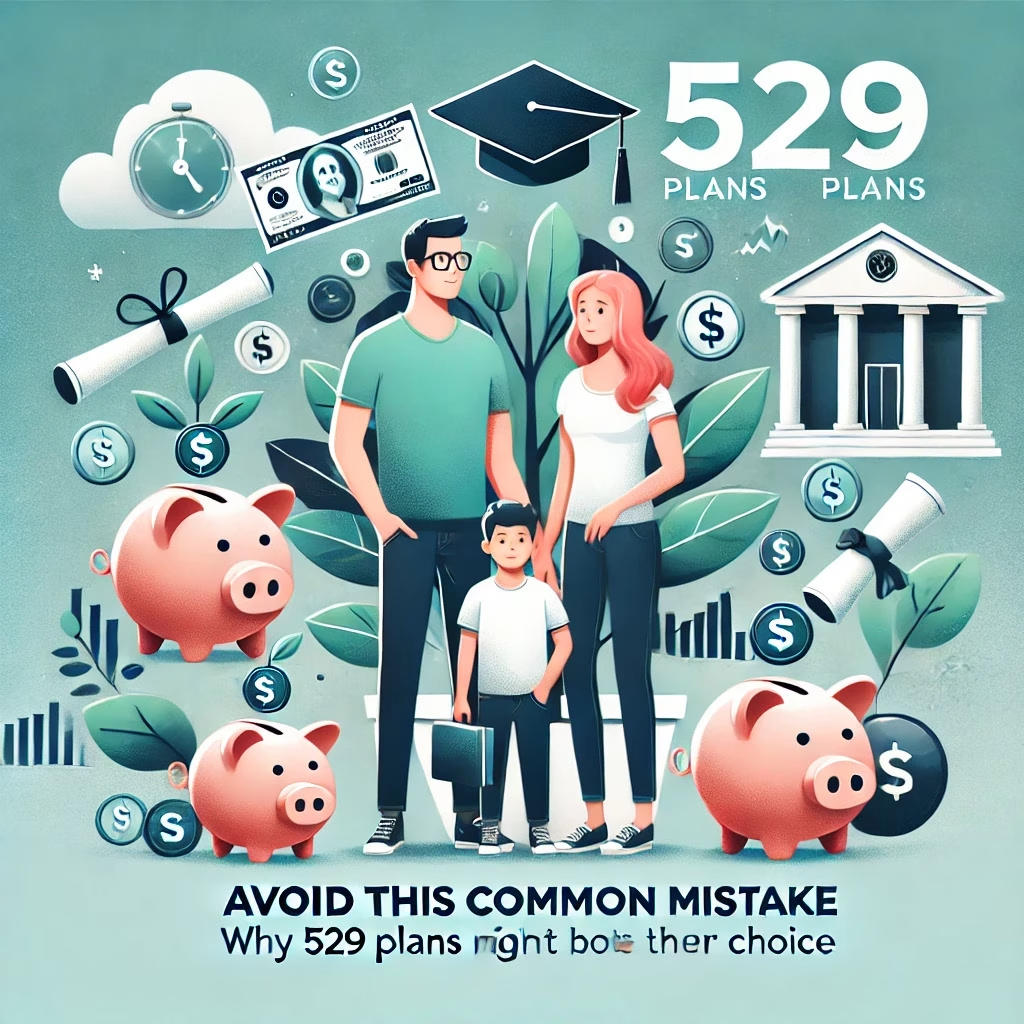
When planning for your child’s college education, 529 plans are often promoted as an ideal savings tool. While they do offer tax benefits, it’s essential to look beyond the surface and evaluate their potential downsides. This blog explores why 529 plans might not be the best fit for everyone and highlights alternative options to consider.
Understanding 529 Plans
A 529 plan is a tax-advantaged savings account designed for education expenses. Contributions grow tax-deferred, and withdrawals for qualified education costs are tax-free. These benefits make 529 plans appealing, but they also come with limitations that could impact your financial goals.
Key Drawbacks of 529 Plans
1. Limited Flexibility in Use
The biggest disadvantage of 529 plans is their restricted use. Funds can only be used for qualified education expenses, such as tuition, fees, and room and board.
- If your child decides not to attend college or opts for a less expensive school, you may struggle to use the funds effectively.
- Non-qualified withdrawals are subject to income tax and a 10% penalty on earnings, reducing the value of your savings.
2. Impact on Financial Aid Eligibility
529 plan assets are considered in financial aid calculations.
- Up to 5.64% of the account value can be included in the Expected Family Contribution (EFC), potentially reducing the amount of need-based aid your child qualifies for.
This consideration can be a significant disadvantage if you’re relying on financial aid to offset college costs.
3. Gift Tax Implications
Contributions to a 529 plan count toward the annual gift tax exclusion, which is $17,000 per individual in 2023.
- Exceeding this limit could trigger gift tax consequences, which may complicate your financial planning.
4. Market Risks
Like any investment, 529 plans are subject to market fluctuations. While some plans offer age-based investment options to reduce risk over time, there’s still potential for losses.
- Diversifying investments within the plan is crucial, but it doesn’t eliminate all risks.
Are There Alternatives to 529 Plans?
If you’re concerned about the limitations of 529 plans, there are other ways to save for your child’s education while maintaining flexibility and tax benefits:
Permanent life insurance policies, such as whole life or indexed universal life (IUL), can provide:
- Tax-free cash value growth that can be used for education or other purposes.
- No penalties for non-education withdrawals.
- Exclusion from financial aid calculations, preserving eligibility for more assistance.
2. Annuities
Annuities can be a low-risk way to save for future expenses, offering:
- Guaranteed growth depending on the type of annuity.
- Flexibility in using funds for non-education-related needs.
3. Brokerage Accounts
Taxable investment accounts allow you to save and invest with fewer restrictions.
- While they don’t offer the tax advantages of 529 plans, they provide flexibility to use funds for any purpose.
4. Building a Strong Financial Foundation
Before committing to any single strategy, ensure your overall financial plan is solid.
- Pay off high-interest debt.
- Build an emergency fund.
- Diversify your investments for balanced growth and stability.
Making the Right Choice
While 529 plans can be a valuable tool for saving for college, they may not align with everyone’s financial goals. Considering the potential penalties, impact on financial aid, and market risks, it’s essential to evaluate all options carefully.
Let’s Build a Plan That Works for You
If you’re looking for alternatives to 529 plans or want to explore comprehensive financial strategies, I can help. From leveraging tools like life insurance and annuities to building a financial foundation that supports your family’s goals, let’s create a plan that works for you.Contact me today for a personalized consultation. Together, we can ensure your savings strategy is as flexible and effective as your future demands.
